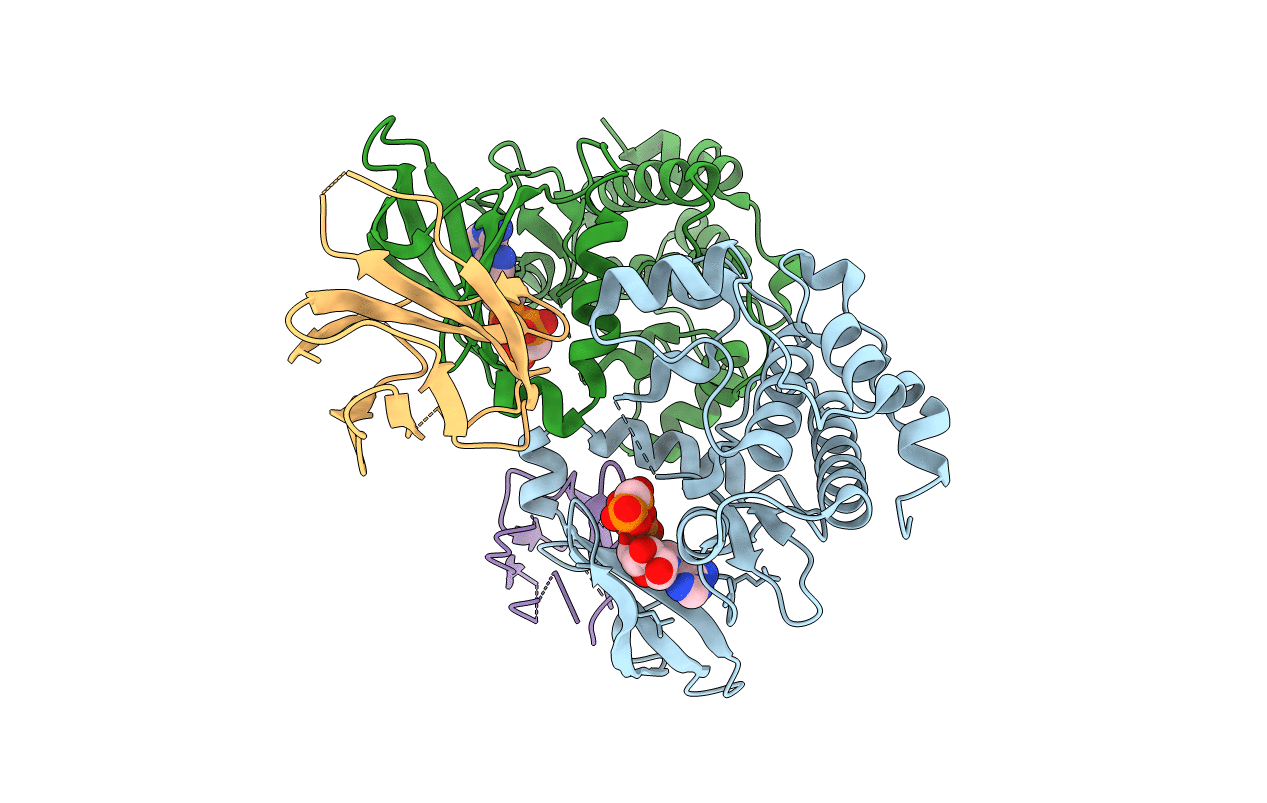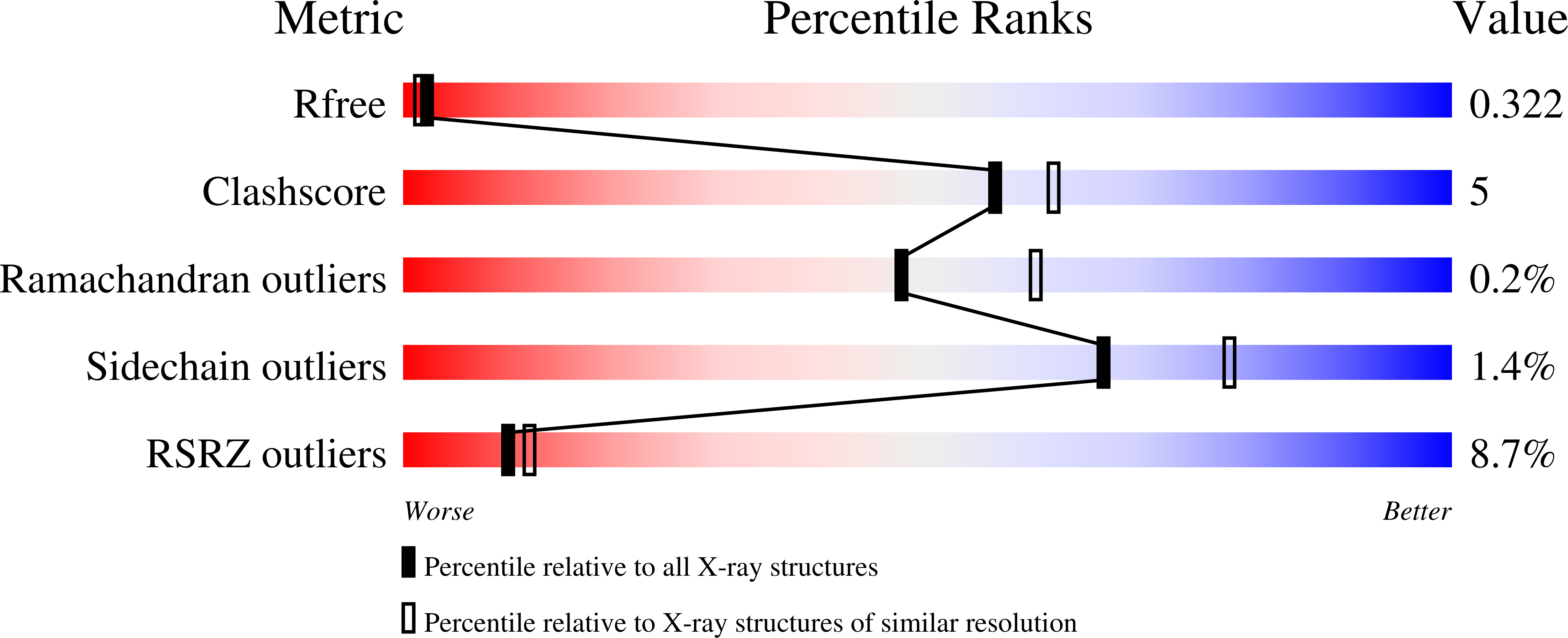
Deposition Date
2018-01-24
Release Date
2019-02-27
Last Version Date
2023-10-04
Entry Detail
PDB ID:
6C83
Keywords:
Title:
Structure of Aurora A (122-403) bound to inhibitory Monobody Mb2 and AMPPCP
Biological Source:
Source Organism:
Homo sapiens (Taxon ID: 9606)
synthetic construct (Taxon ID: 32630)
synthetic construct (Taxon ID: 32630)
Host Organism:
Method Details:
Experimental Method:
Resolution:
2.55 Å
R-Value Free:
0.32
R-Value Work:
0.26
R-Value Observed:
0.26
Space Group:
P 21 21 21


